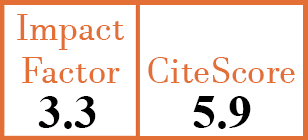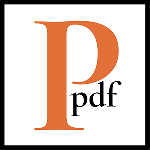Full Papers
The JAK inhibitor baricitinib inhibits oncostatin M induction of proinflammatory mediators in ex-vivo synovial derived cells
S. Weston1, J.L. Macdonald2, L.M. Williams3, E. Roussou4, N.V. Kang5, S. Kiriakidis6, P.C. Taylor7
- Botnar Research Centre, Nuffield Department of Orthopaedics, Rheumatology and Musculoskeletal Sciences, University of Oxford, UK.
- Botnar Research Centre, Nuffield Department of Orthopaedics, Rheumatology and Musculoskeletal Sciences, University of Oxford, UK.
- Kennedy Institute of Rheumatology, Nuffield Department of Orthopaedics, Rheumatology and Musculoskeletal Sciences, University of Oxford, UK.
- King George Hospital, Ilford, Essex, UK.
- Royal Free Hospital, Hampstead, London, UK.
- Botnar Research Centre, Nuffield Department of Orthopaedics, Rheumatology and Musculoskeletal Sciences, University of Oxford, UK.
- Botnar Research Centre, Nuffield Department of Orthopaedics, Rheumatology and Musculoskeletal Sciences, University of Oxford, UK. peter.taylor@kennedy.ox.ac.uk
CER14411
2022 Vol.40, N°9
PI 1620, PF 1628
Full Papers
Free to view
(click on article PDF icon to read the article)
PMID: 34665696 [PubMed]
Received: 03/12/2020
Accepted : 06/09/2021
In Press: 13/10/2021
Published: 19/09/2022
Abstract
OBJECTIVES:
To investigate the ex vivo effect of the JAK1/2 inhibitor baricitinib on expression of pro-inflammatory mediators in rheumatoid arthritis (RA) fibroblast like synoviocytes (FLS) stimulated with TNFα, IL-1β and oncostatin M (OSM), and in RA synovial membrane cells (SMCs).
METHODS:
RA and osteoarthritis (OA) SMCs, were isolated from arthroplasty specimens of RA (n=8) and OA (n=8) patients, respectively, using enzymatic digestion followed by cell propagation to obtain RA (n=5) and OA (n=3) FLS. Normal FLS and normal human foreskin fibroblasts (HSF) were purchased from commercial sources. Fibroblasts were stimulated with cytokines with or without baricitinib. RA SMCs were cultured in the presence of baricitinib without stimulation. JAK/STAT activation and levels of mRNA and proteins of the various inflammatory cytokines (IL-6, IL-8, MCP-1, RANTES and IP-10) were determined by qPCR, ELISA and MSD.
RESULTS:
Baricitinib inhibited OSM-induced JAK signalling in RA synovial fibroblasts and effectively suppressed subsequent expression of the proinflammatory mediators IL-6, MCP-1 and IP-10. However, baricitinib was not effective in altering levels of spontaneously released TNFα, IL-6 and IL-8 in RA SMC. Although both TNFα and IL-1β signal independently of the JAK/STAT pathway, in HSF, but not in RA FLS, baricitinib significantly inhibited TNFα- and IL-1β-induced MCP-1 and IP-10 protein levels in a dose dependent manner. Furthermore, baricitinib did not inhibit TNFα- and IL-1β-induced expression of IL-6, IL-8 and MCP-1 in RA FLS.
CONCLUSIONS:
These findings are consistent with known signalling pathways employed by OSM, TNFα and IL-1β, but our data suggest that in HSF, baricitinib may have anti-inflammatory effects via downstream modulation of cytokines and chemokines produced in response to TNFα or IL-1β.


